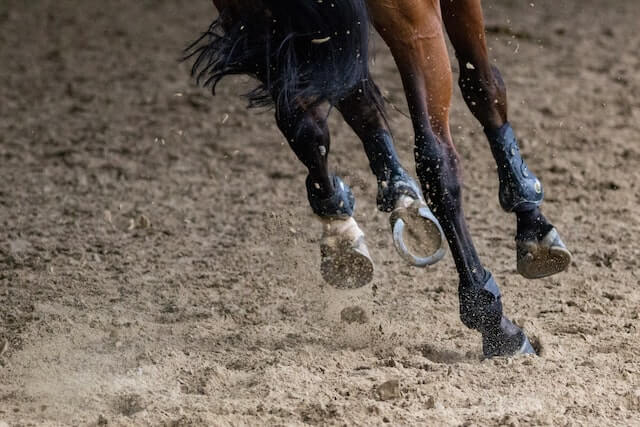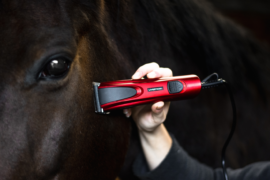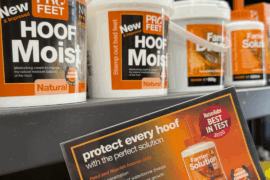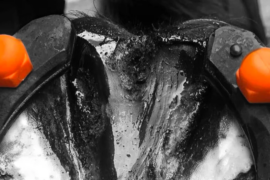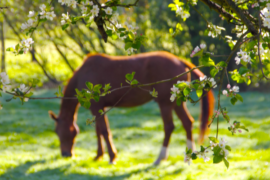If you have a horseshoe question, you are in the right place. At R&R Country, we have a wealth of knowledge and experience with horses and have collated a guide of the frequently asked questions regarding horseshoes, barefoot horses and more. Keep reading to find out how long horses have been wearing shoes, consideration points for barefoot horses and even what materials horseshoes were made from in 400BC.
Table of contents
- Why do horses need shoes?
- What are horseshoes made of?
- Do horses like getting new shoes?
- How often do horses need new shoes?
- How often do horses need new shoes?
- How much does it cost to shoe a horse in the UK?
- How to stop a horse from pulling shoes off
- Over Reach Boots
- When did horses start wearing shoes?
- Horse protection equipment at R&R Country
Why do horses need shoes?
Horseshoes can be beneficial for horses in many ways; the 3 main pillars of why horses need shoes include:
Correction + Health: To support the horse’s weight, their foot needs to be balanced and have the correct structure and form. If the hoof of a horse is not balanced, then preventative hoof care measures can be put into place to remedy the issue.
Protection: Every horse is different, and some can be subject to having soft or weak hooves. This can mean that their hooves break or bruise and potentially crack, leading to lameness problems. By wearing shoes, the horse has extra protection and will not wear as easily or unevenly.
Performance: Wearing horseshoes can benefit a horse’s performance if they carry heavy loads or participate in events. Horseshoes help provide traction and can ultimately help with performance.
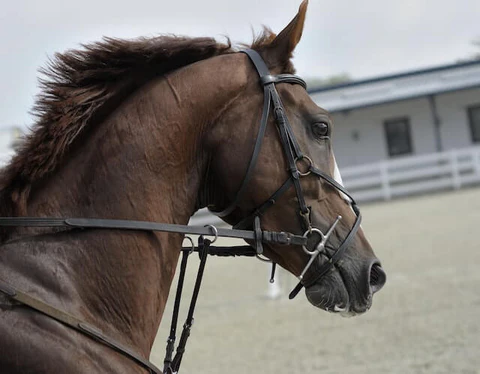
What are horseshoes made of?
Usually, horseshoes are made from robust metals such as steel and aluminium, but they can also be made of other materials such as copper, plastic or rubber.
Do horses like getting new shoes?
Horses are fairly neutral when it comes to getting new shoes. Some horses like having their hooves picked, and they don’t hate the process of shoeing.
How often do horses need new shoes?
It depends on the activity level of your horse and the types of activities they partake in, but as a general rule, you should reset a horse’s shoes every 4-6 weeks. This time frame will ensure that their hooves grow, but also that there is enough time for activity to wear them down. Checking in on your horse’s hooves every 4-6 weeks will also allow you to track the health of their feet.
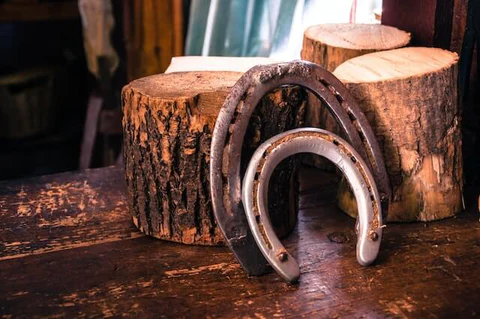
How much does it cost to shoe a horse in the UK?
In the UK, you can expect to pay around £30-40 for your horse to be trimmed and around £70-90 for your horse to have new shoes.
How to stop a horse from pulling shoes off
Sometimes, horses can tear off part of their hoof when removing shoes. Loose horseshoes can be a danger to your horse and those around your horse. But what preventative measures can you take to stop your horse from pulling its shoes off?
Over Reach Boots
Referred to as bell boots, over reach boots cover a horse’s hoof, heel and forelegs. They are designed to help protect your horse from over reach injuries and keep their shoes secure.
The selection of over reach boots available at R&R Country includes a wide selection of colours, brands and price ranges to suit you and the needs of your horse.
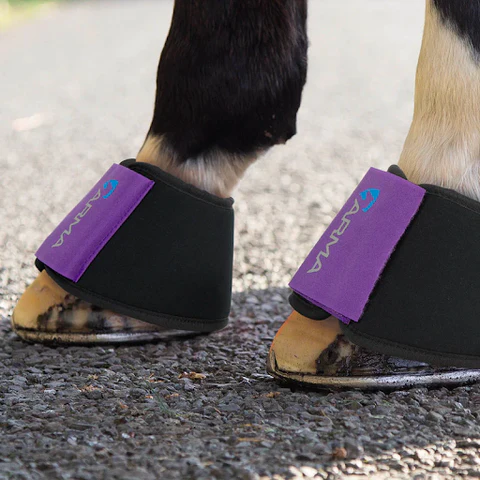
Shoe your horse regularly
As mentioned previously, it is important to regularly update your horse’s shoes and keeping on top of this every 4-6 weeks can help keep your horse’s shoes in good condition.
Barefoot option
Considering whether your horse needs shoes in different seasons could be a solution if your horse has a low activity level or is due to have some downtime.
When did horses start wearing shoes?
A little bit of history, horses have been wearing shoes for thousands of years, and the earliest form of shoes for horses can be traced back to 400BC. The shoes were crafted from natural materials such as woven plants.
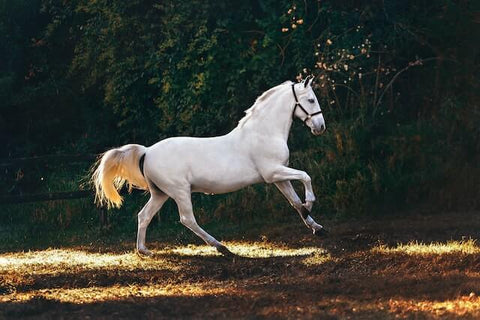
Pros and cons of horses going barefoot
There are many arguments for and against keeping a horse barefoot, and as an owner, it is up to you to make the judgement call on what you would prefer.
Advantages of barefoot horses
- Increased shock absorption – When a horse is barefoot, they have greater shock absorption. This can be beneficial depending on the horse and can reduce the risk of tendon or joint damage.
- Hoof circulation benefits – Being barefoot can be beneficial for the circulation of horses, as the hoof will contract and expand with each step. This, in turn, will increase blood flow to the feet of the horse.
- Relieve pressure – When a horse is barefoot, pressure from the legs can be relieved easier than if they wear shoes.
Disadvantages of barefoot horses
- Bruising and pain – If you and your horse have been for a long ride, your horse can experience some discomfort, pain and bruising if they are barefoot.
- Transitioning – Some horses cannot be without shoes due to wearing them for so long, this can also be because of genetics.
Less Traction – If your horse is shod you are likely to get more traction underfoot. You also have the option of adding studs for increased grip on various terrains.

Horse protection equipment at R&R Country
Now that you know all there is to know about horseshoes, why not explore the full range of horse riding equipment and supplies available? Our curated selection of horse supplies includes premium brands, such as Weatherbeeta, LeMieux and Fairfax, that are designed to cover all of your horse’s needs as well as your own.
The selection of horse supplies at R&R Country includes boots and protection equipment, saddles for a range of experience levels and horse care equipment to ensure that your horse is the most well-groomed in the yard.
Related blogs

